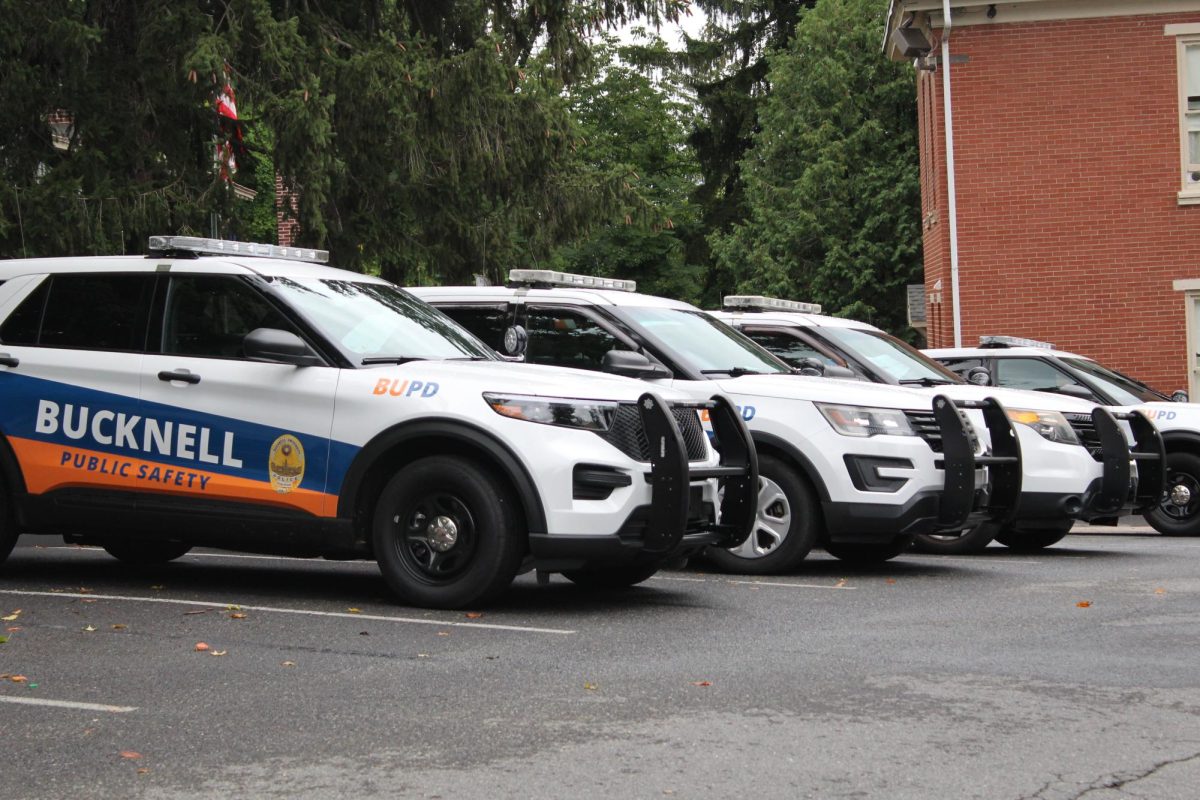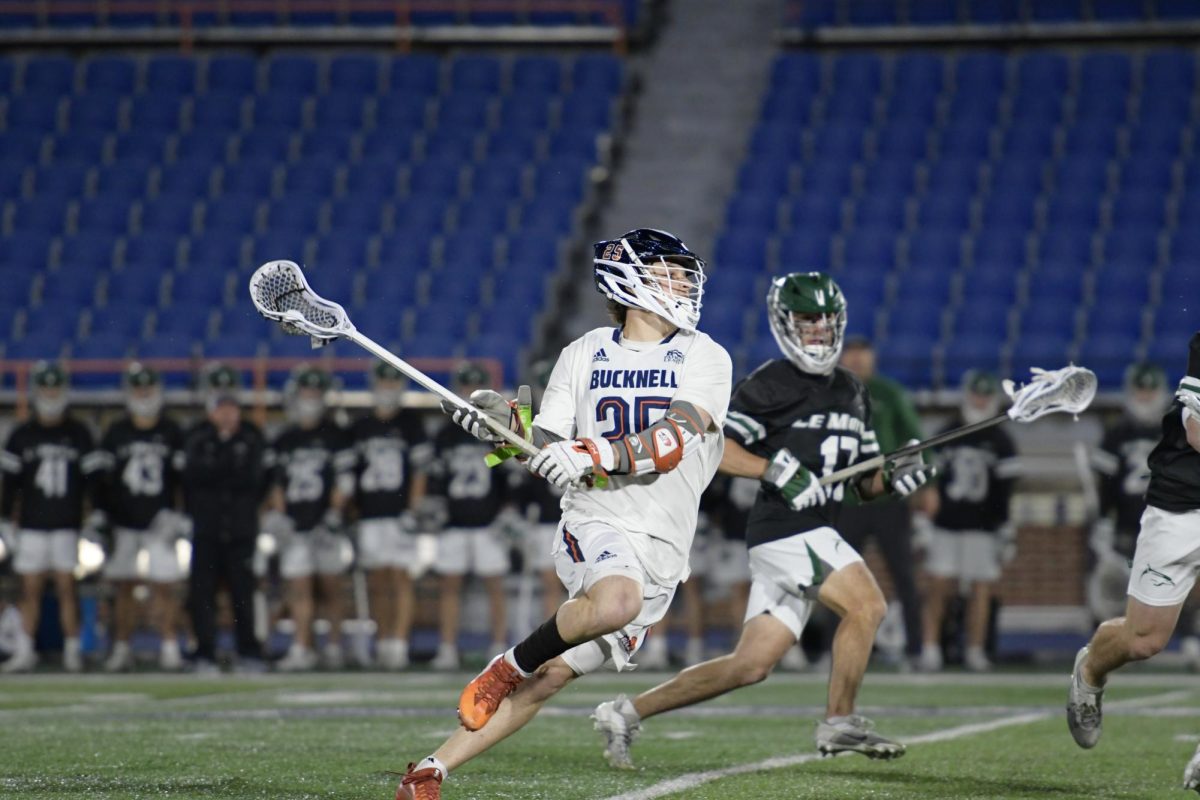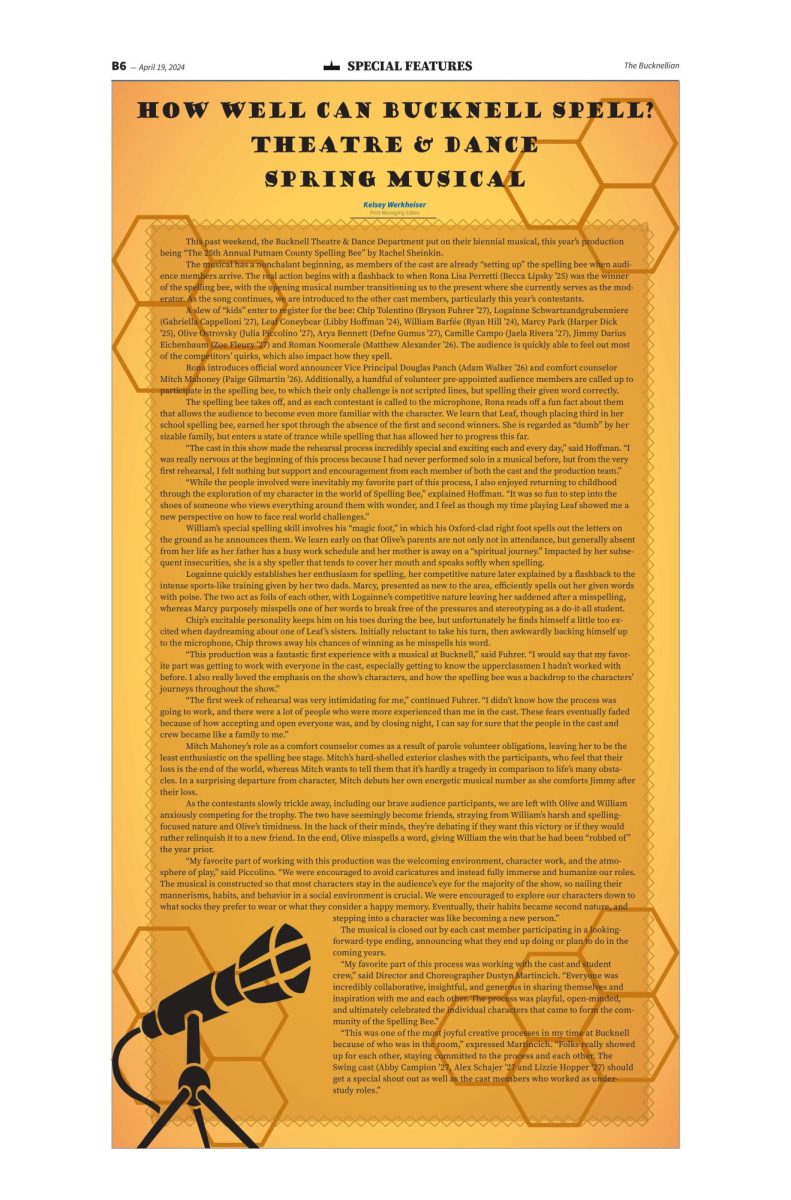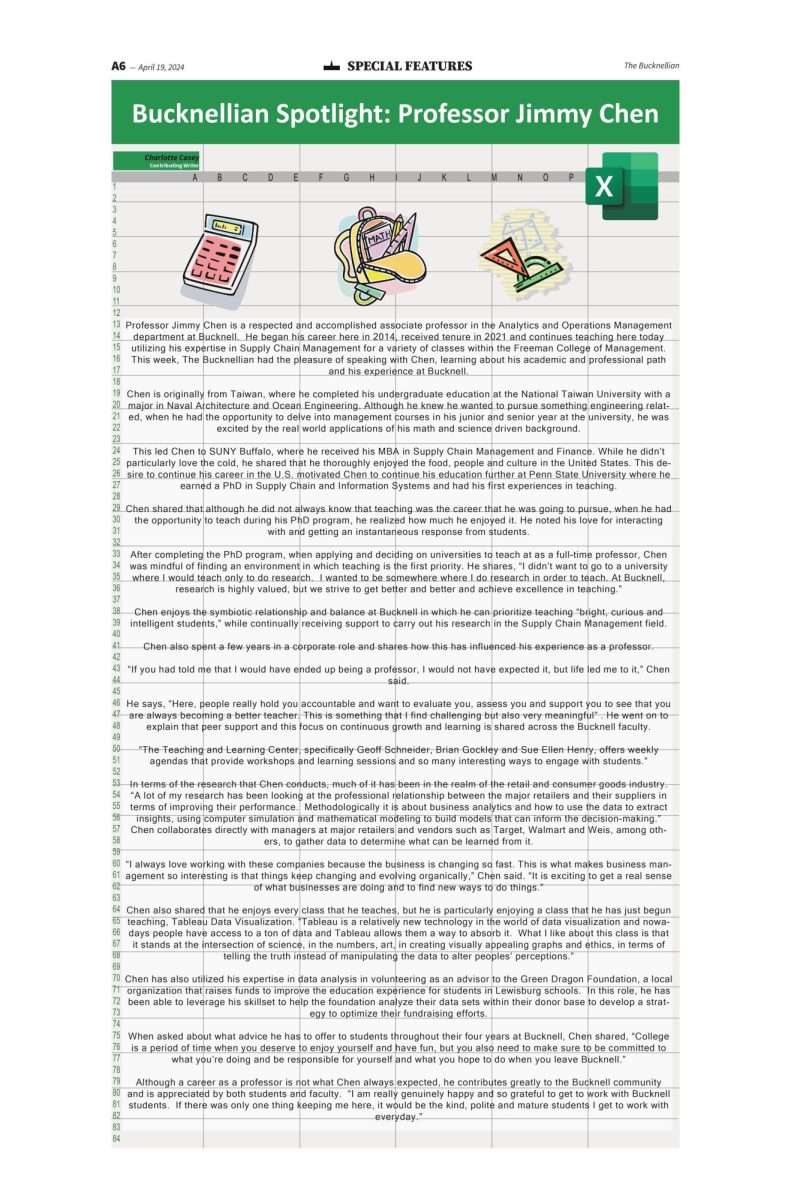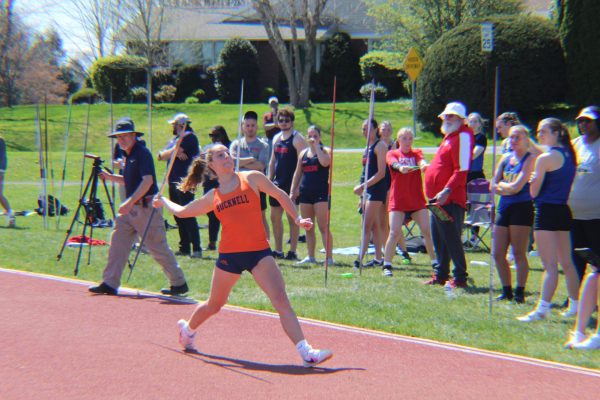Investigative News: “Fair Districts” plan aims to end gerrymandering in PA, engage students along the way
April 6, 2017
The unfair practices of state legislatures through redistricting and gerrymandering was discussed alongside potential reform by Professor of Economics Christopher Magee and Esquire Executive Director of the League of Women Voters of Pennsylvania Suzanne Almeida at the forum titled, “Reforming the Redistricting Process: What Are the Issues?” The event was sponsored by the Bucknell Institute for Public Policy (BIPP) on April 3 in Trout Auditorium. The purpose of the forum was to spread awareness to University students on legislation regarding redistricting recently proposed.
Lewisburg is within Union County’s 10th Congressional District, currently represented by Republican Tom Marino. In November 2016, former Mayor of Lewisburg Mike Molesevich lost against incumbent Marino.
The Washington Post reported that Pennsylvania’s 7th Congressional District was the fourth most gerrymandered district in the nation. It is famous for being nicknamed “Goofy Kicking Donald Duck” due to its peculiar shape.
Redistricting that occurred after the 2010 census led to particularly dramatic shifts in district lines, according to Magee.
This forum pertains specifically to students on campus who reside in Pennsylvania who “could be active on the matter,” Magee said. Magee acknowledges the difficulty of passing legislation through Congress due to two polarized parties that struggle to compromise, but he believes that the efforts against gerrymandering are important.
Malaika de Weever ’17 believes that because University students are considered residents of Pennsylvania “it is important for us to understand how the redistricting process will affect us and the larger community.”
“It is important for students attending universities in PA to understand how he threat of gerrymandering will have economic, business and social impacts that the University will not always be able to mitigate,” de Weever said.
De Weever said that although she had realized that redrawing districts was a big deal she had not realized the magnitude of redistricting changes. One change that specifically impacted De Weever was when Magee highlighted the occurrence of majority-minority districts and the possibility that legislators would become less responsive to minority concerns.
“As a student of color residing in Pennsylvania, I have come to recognize what little voice minority populations in Central PA currently have.”
If voters “put pressure on the legislature, the legislature would respond to that. The only way they are going to reform is if enough people get involved,” Magee said.
Almeida was present to address pending bipartisan legislation recently proposed in Pennsylvania that would establish an independent commission to draw Pennsylvania’s congressional and state legislative districts maps.
Senate Bill 22, known as the Fair District plan, was introduced by Democrat Lisa Boscola and Republican Mario Scavello, both Pennsylvania senators, on Feb. 16. The bill would amend the state constitution in order to establish an independent commission of 11 members to have complete power to draw congressional and state legislative district maps.
The commission members cannot hold political or party office nor have familial or employment relations with someone who holds office. Four members from each of the two largest political parties in Pennsylvania and three members not affiliated with either party would make up the commission.
Boscola believes that this independent system is necessary because “the current process invites gerrymandering, robs citizens of competitive races, and spurs the kind of partisan polarization that has stymied legislative work in both Washington, D.C. and Harrisburg,” Boscola said.
Senate Bill 22 can only be passed after two legislative sessions and a public hearing.
Magee gave an overview of redistricting and the present issues with the process. The practice of gerrymandering is when state legislatures draw congressional district lines after each census that gives their own party an advantage in winning seats in Congress over the next 10 years.
Magee stated the importance of decade elections. Those elected into office that year draw district lines that remain for the next 10 years.
“So in some sense the politicians are choosing their voters rather than the other way around,” Magee said.
Magee cited the state of California as an example. To protect politicians currently in office, both Democrats and Republicans from the state legislature drew district lines with the purpose of creating districts that are very unlikely to switch which party they elect. Consequently, only one district changed from one party to the other in the 2000-2010 period.
“That makes elections less competitive and it means that the politicians just have to win the primary to get elected, so they don’t have to appeal to moderate voters. Thus, you get more extremists in office,” Magee said.
Iowa is one state that currently has an independent institution drawing the state’s district lines without acknowledging the partisan makeup of the electorate. Iowa only has four districts, “but they still had more competitive elections than California did and a bunch of other big states that had district lines drawn to protect the incumbent,” Magee said.
Arizona recently transitioned the power of drawing district lines to an independent institution through a referendum. Magee considered the process of a referendum easier than through the legislature, which gave up power through these types of reforms.
Pennsylvania’s constitution outlines that state legislatures are responsible for drawing district lines; therefore, an amendment must be added to the constitution. A referendum is not possible.
Magee considered Arizona and Iowa systems as “fair” and a form of “better government” because politicians no longer are able to essentially choose which voters elect them.
The League of Women Voters of Pennsylvania are trying to mobilize the involvement of grassroots to aid in the awareness of education of the proposed legislature.

